
An introductory course on human behaviour at work.
- Teacher: Renjini D
- Teacher: Dr Surpriya M H
- Teacher: Dr Zakkariya

An introductory course on human behaviour at work.
Course Description
Elementary fundamentals of linearly elastic and isotropic solid mechanics would be discussed in this course. This is a typical base course for Structural Analysis, Theory of Elasticity and Plasticity, Structural Design, Mechanics of Machinery, etc. Generally, Civil Engineering, Mechanical Engineering and Electrical Engineering graduate students would be the stake holders of this course!
Objectives
1. To introduce the basic concepts of stress, strain, displacements and elastic properties of materials.
2. To develop an affinity towards the study of internal forces in structures, like bending moment, shear force, twisting moment and axial force and their associated stresses and strains and hence to lead towards their applicability in design of structures and machine components.
3. To introduce deflection and slope of structures through elastic and statically determinate beam examples.
4. To introduce the concept of stability of structures through Euler's analysis of columns and hence to show that stability criteria is as important as strength or serviceability criteria in design of structures.
Prerequisites
1. A basic knowledge of Elementary Engineering Mechanics - Statics (Newtonian Mechanics) is expected.
2. Exposure to basic algebra, trigonometry, calculus and matrix operations.
Course Description
This is a follower course of Analysis of Structures I and II for 2012 scheme B.Tech Civil Engineering in the CUSAT. The course essentially aims at matrix based analysis of structures and introduction to the finite element method (elementary level, only). Introduction to computer methods of analysis of structures can also be a part of discussion.
Course Objectives
1. To introduce the basics of flexibility and stiffness and hence pave way to systematic methods for structural analysis.
2. To introduce the concept of writing the linear algebraic equations generated as part of the analysis of structures through the method of consistent deformation or the slope-deflection method in matrix form and solving them after applying the boundary conditions.
3. Introduction of the direct stiffness method to throw light to the need of computer implementation of the method and give a step-by-step procedure for the same.
4. To eradicate an expected fearful approach of a student of civil engineering towards the most versatile numerical tool in engineering, the finite element method through introduction of the same via. the stiffness method.
Prerequisites
1. Exposure to statically indeterminate structural analysis through consistent deformation and slope deflection methods.
2. Basics of strength of materials.
3. A good level of understanding of determination of deflection and slope of basic structures (beams and portal frames).
4. Sound mathematical ability in linear algebra, fundamental calculus and basic trigonometry.
Course Description
The fundamentals of the most versatile numerical tool in engineering and science, the Finite Element Method (FEM), limitations of applicability of the FEM, introduction to the open world of a class of methods, named as the Mesh-free methods (M-Free) and description of one of such methods would be attempted in this course.
Course Objectives
1. Introduce the Finite Element Method from the scratch through solid mechanics applications.
2. Motivate the students to generate an affinity towards assimilating the fundamentals of the FEM before attempting any computer program of which the FEM is a black box.
3. Illustrate the FEM (in 1D and 2D) through certain typical benchmark examples from solid mechanics and numerical procedure for integration, solution of equations (linear, non-linear and eigen value problems).
4. Throw light on the limitations of the applicability of the mesh-based methods and the remedies adopted to overcome the same, in the literature.
5. Introduce the mesh free concept and illustrate the same through one of the integral equation representation mesh-free methods, the Reproducing Kernel Particle Method (RKPM).
Prerequisites
1. Exposure to linear solid mechanics (equations of equilibrium, compatibility, boundary conditions, applications, etc.).
2. Exposure to linear algebra (matrices and their operations), calculus and partial differential equations.
Financial Management for Engineers
Computer Aided Design and Management
Fundamentals of Corporate Laws
Course Objective
This course is designed to enable the students in understanding the basic laws governing companies.
Expected Outcome of the course:
On completion of the course the student will be able to
Interdisciplinary Elective
CONSUMER PROTECTION LAWS
Total Credits: 4
Mode of Offering: MOOC Course
Course Teacher: Dr. Aneesh V. Pillai, Assistant Professor, School of Legal Studies,
Course Code:
Course Objective:
This course is intended to provide an idea about the scope and application of consumer protection laws in India. This further discusses the various quality standards and marks for the protection of consumers as well as the issue of defect and deficiency in goods and services. This course also provides an idea about the mechanisms for the enforcement of consumer rights in India. The course intends to cover contemporary judicial and legal developments in this area.
Learning Outcomes:
On successful completion of this course, the learner will be able:
1) To understand about various consumer rights, the laws dealing with such rights and to act as a responsible consumer in the market
2) To understand the unfair practices in the market and advice about the same to his friends and relatives
3) To pursue remedies not only for him but on behalf of others against defect or deficiency
Course Content:
Module I: Introduction
Consumer: Meaning and Scope - Rights of Consumers – History of Consumer Protection - Consumer Protection Laws – General Laws – Specific Laws – Voluntary Mechanisms
Module II: Consumer Protection Laws
Civil Laws – Criminal Laws - Consumer Protection Act, 2019 – Key Features – New Definitions – Central Consumer Protection Authority – Mediation - Other important Features
Module III: Defects in Goods
Goods - Consumer of Goods – Defects – Remedies – Judicial Decisions - Unsafe and Hazardous Products - Product Liability - Quality Certification Marks and Standards
Module IV: Deficiency in Service
Service - Deficiency in Service – Remedies – Deficiency in Different Services - Unsafe and Hazardous Service - Service Liability – Medical Service & Consumer – Advertisements
Module V: Enforcement of Consumer Rights
Agencies under Consumer Protection Act - Central Consumer Protection Authority – Consumer Protection Councils - Consumer Commissions - Jurisdiction, Functions and Powers - Procedure – Enforcement of Orders – Mediation
References:
1. Dr. Avtar Singh, Consumer Protection Laws, EBC, Lucknow, 2018
2. G. B. Reddy, Law of Consumer Protection, Hyderabad: Gogia Law Agency, 2014
3. Mamta Rao, Public Utility Services under the Consumer Protection Act, Deep and Deep Publications, New Delhi, 1998
4. V N Viswanathan, Consumer Rights in Service Sector, D. K. Agencies, New Delhi, 2008.
5. Rifat Jan, Consumerism and Legal Protection of Consumers, Deep & Deep Publishers, New Delhi, 2007.
6. MM Nabi, et al, Consumer Rights and Protection in India, New Century Publications, 2015
7. D P Wadhwa & N L Rajah, The Law of Consumer Protection (Set of 2 Volumes), Lexis Nexis, 2017
8. Dr. H. K. Saharay, Text Book on Consumer Protection Law, Universal Law Publishing Co, 2017
9. P K Dutta, Consumerism and Consumer Protection in India: Law and Practice, Himalaya Publishing Co, 2015.
Economics of Fisheries ( Course Code: CUSAT-24-400-002)
Fish, as a natural
resource is an asset to our country. Indian fisheries sector plays an important
role in socioeconomic development of the country. Fisheries sector has
potential contribution to national income, nutritional security, employment
opportunities, and export earnings. The fisheries sector has transformed from
traditional subsistence activity to a well-developed, diversified commercial
enterprise with vast untapped potential. This sector requisites proper
planning, allocation and management for attaining the maximisation of the fisheries
production, cost minimisation and fishery resource optimization. Fisheries
economics is the study of optimal allocation of fishery resources in such a way
that the value of production and society’s welfare are maximized.
This course deals with application of Economic theory into fisheries management. Economics of Fisheries looks for the best use of available fishery resources. It focuses on the costs and benefits of fisheries activities and attempts to make effective decisions out of the available alternatives.
After completing the course, you will be able to apply the theoretical knowledge of Economics into practical fisheries situations. You may able to distinguish between demand and supply functions in the economy. You may competent to analyse cost, revenue and production in the short run and long run.
In this course, there are five units (Modules). First unit deals with an introduction to economics and fishery system. Second unit covers Demand and Supply Analysis. Third Unit, discuss about Cost and Revenue Analysis. Fourth Unit includes production Analysis and pricing methods. Fifth Unit, that’s our last unit summarises the macro economic framework of fisheries economics.
This course will be beneficial to BSc, BFSc, MSc, MFSc Fisheries Students, Research Scholars of Fisheries Economics and Fisheries Resource Management and Fisheries Entrepreneurs.
I wish you all HAPPY LEARNING
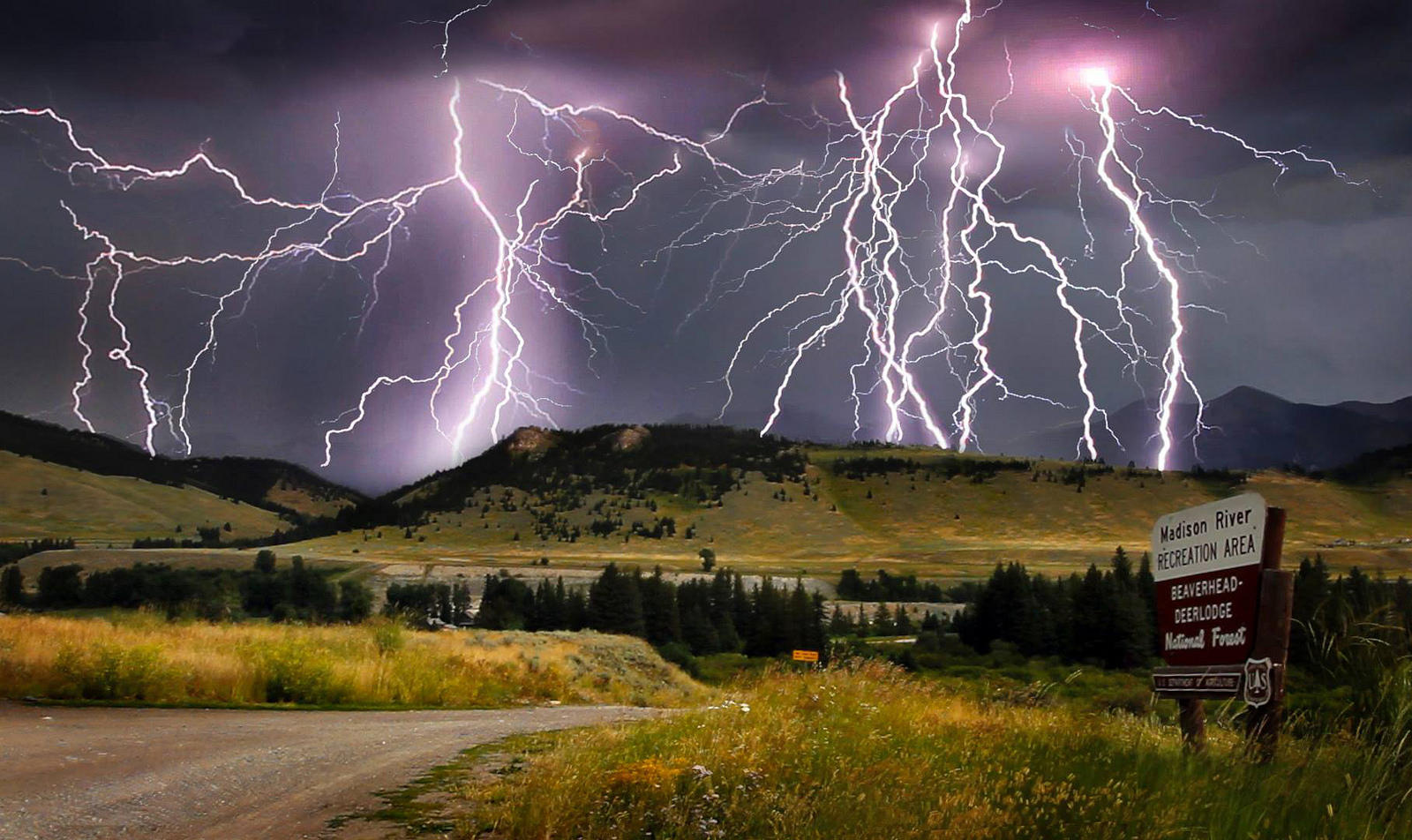
Cloud physics is the study of the physical processes that lead to the formation, growth and precipitation of atmospheric clouds. These aerosols are found in the troposphere, stratosphere, and mesosphere, which collectively make up the greatest part of the homosphere. Clouds consist of microscopic droplets of liquid water (warm clouds), tiny crystals of ice (cold clouds), or both (mixed phase clouds). Cloud droplets initially form by the condensation of water vapor onto condensation nuclei when the supersaturation of air exceeds a critical value according to Köhler theory. Cloud condensation nuclei are necessary for cloud droplets formation because of the Kelvin effect, which describes the change in saturation vapor pressure due to a curved surface. At small radii, the amount of supersaturation needed for condensation to occur is so large, that it does not happen naturally.
Atmospheric electricity refers to electricity that exists in the atmosphere as a result of natural phenomenon. The primary natural source of atmospheric electricity is thunderstorm activity, with lightning being the most spectacular and obvious manifestation of this electricity. However, there are other aspects of atmospheric electricity that cannot be seen visibly, but are helping scientist understand changes in the earth's climate.
After completing the course the student will be able to
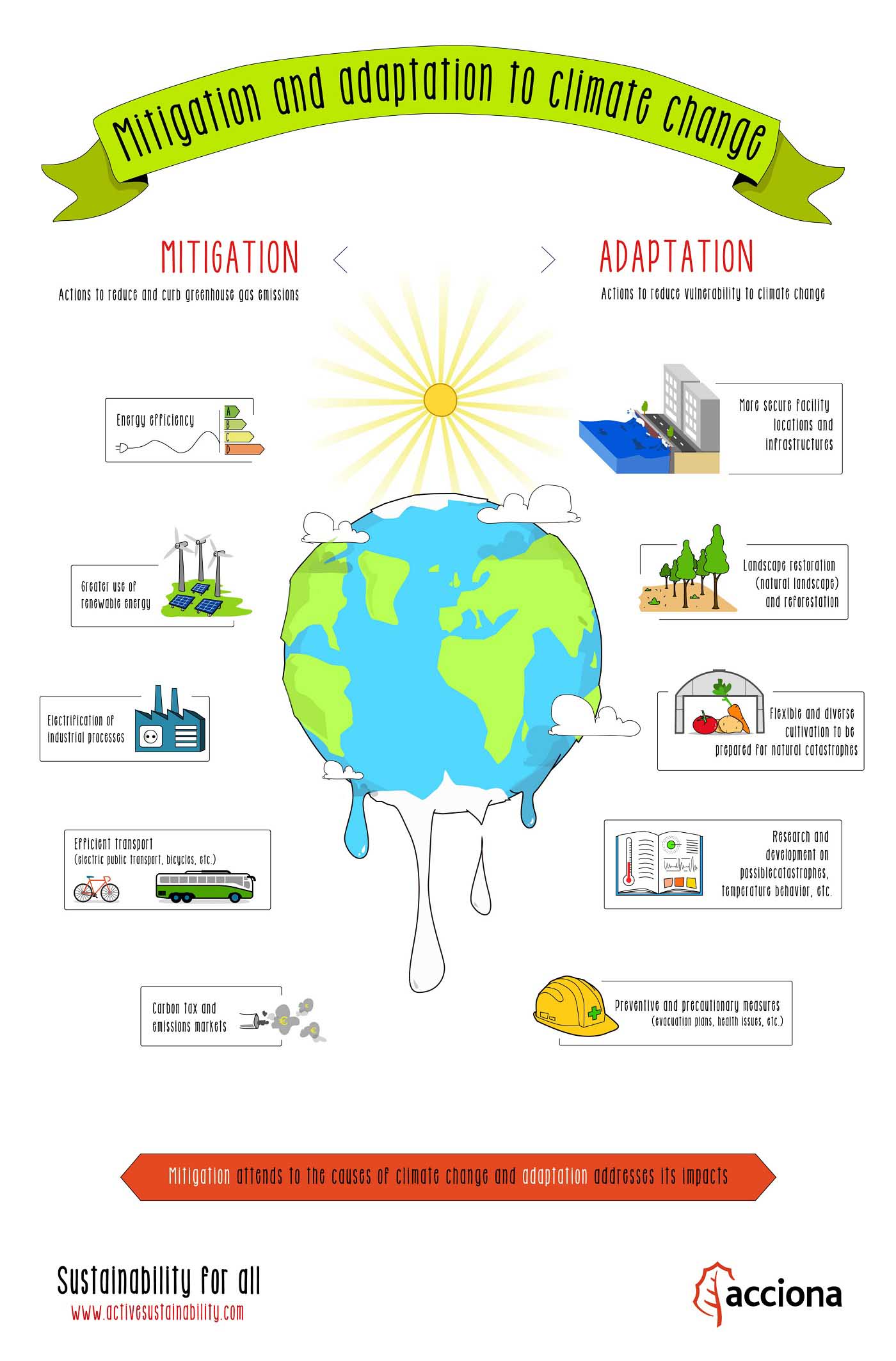
When it comes to tackling climate change to prevent the impacts it causes in the different systems of the planet, the human being applies two types of measures: mitigation and adaptation.
Mitigation measures are those actions that are taken to reduce and curb greenhouse gas emissions, while adaptation measures are based on reducing vulnerability to the effects of climate change.
Mitigation, therefore, attends to the causes of climate change, while adaptation addresses its impacts.
These are some of the mitigation measures that can be taken to avoid the increase of pollutant emissions:
In terms of adaptation measures, there are several actions that help reducing vulnerability to the consequences of climate change:
In this infographic you can learn what are the measures of adaptation and mitigation to climate change
https://www.youtube.com/watch?v=QUegpxhMuQ4
This course is aimed to achieve following objectives....
Describe different types of weather systems
Analyze characteristic features of dominant weather systems over Indian region
Interpret and classify different scale of the weather features and forecasting strategies
Assess challenges and limitations of various forecast process
Predict weather systems at different space-time domains using synoptic and NWP methods
Devise and develop forecast process
Create real time forecast
After completing the course, students will be able to
Understand coding-decoding.
Analyse different charts.
Examine dominant weather systems using synoptic charts.
Reading diffferent NWP charts.
Dignosis and prognosis of weather systems using synoptic/NWP charts.
The middle atmosphere (stratosphere and mesosphere) is the region of the atmosphere between about 16 and 100 km altitude. Studies of dynamical and chemical processes in this region have greatly expanded in recent years owing to the impact of human activities on the stratospheric ozone layer, and the coupling between stratospheric changes and surface climate. A primary area of emphasis is study of the dynamical interactions between the troposphere and the stratosphere, including the transfer of momentum and trace constituents across the tropopause. This effort requires understanding of the influence of both large- and small-scale wave motions on the momentum balance and mass circulation of the middle atmosphere.
The prevailing winds in the atmosphere near the equator above about 17 km are known to undergo a slightly irregular oscillation from strong westerlies to strong easterlies roughly every other year. This Quasi-biennial Oscillation (QBO) has been observed to dominate the winds in this region of the atmosphere for at least the last 6 decades and is characterized by a downward propagation of the westerly and easterly jets that form.
El Niño and La Niña are opposite phases of what is known as the El Niño-Southern Oscillation (ENSO) cycle. The ENSO cycle is a scientific term that describes the fluctuations in temperature between the ocean and atmosphere in the east-central Equatorial Pacific (approximately between the International Date Line and 120 degrees West).
La Niña is sometimes referred to as the cold phase of ENSO and El Niño as the warm phase of ENSO. These deviations from normal surface temperatures can have large-scale impacts not only on ocean processes, but also on global weather and climate.
El Niño and La Niña episodes typically last nine to 12 months, but some prolonged events may last for years. While their frequency can be quite irregular, El Niño and La Niña events occur on average every two to seven years. Typically, El Niño occurs more frequently than La Niña.
Recombinant DNA technology is a 3 credit core course for the M.Sc. Semester III Biotechnology program. This is an advanced course dealing with the tools and techniques involved in manipulating DNA. The various modules elaborate the different enzymes, the types of vectors used, the expression systems, the heterologous host systems used as well as the various cloning strategies and the processes involved therein. In addition techniques such as PCR, blotting, site directed mutagenesis, gene transfer and various screening strategies are included.
After completing the course the student will be able to
thisnnn
M. Sc. Chemistry, Semester II
Total Number of Credits - 3
Continuous evaluation - 50 Marks (30 + 10 + 10)
End semester examination - 50 Marks
Mode of End Semester examination will be communicated to you by the university depending on the pandemic situation
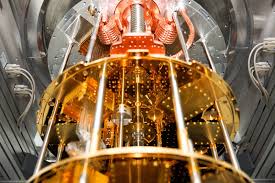
The course is given as an elective for Integrated MSc 10 Semester and MSc 4th semester students at CUSAT. Students will get an overview of the emerging field of quantum computation and the techniques involved in that.
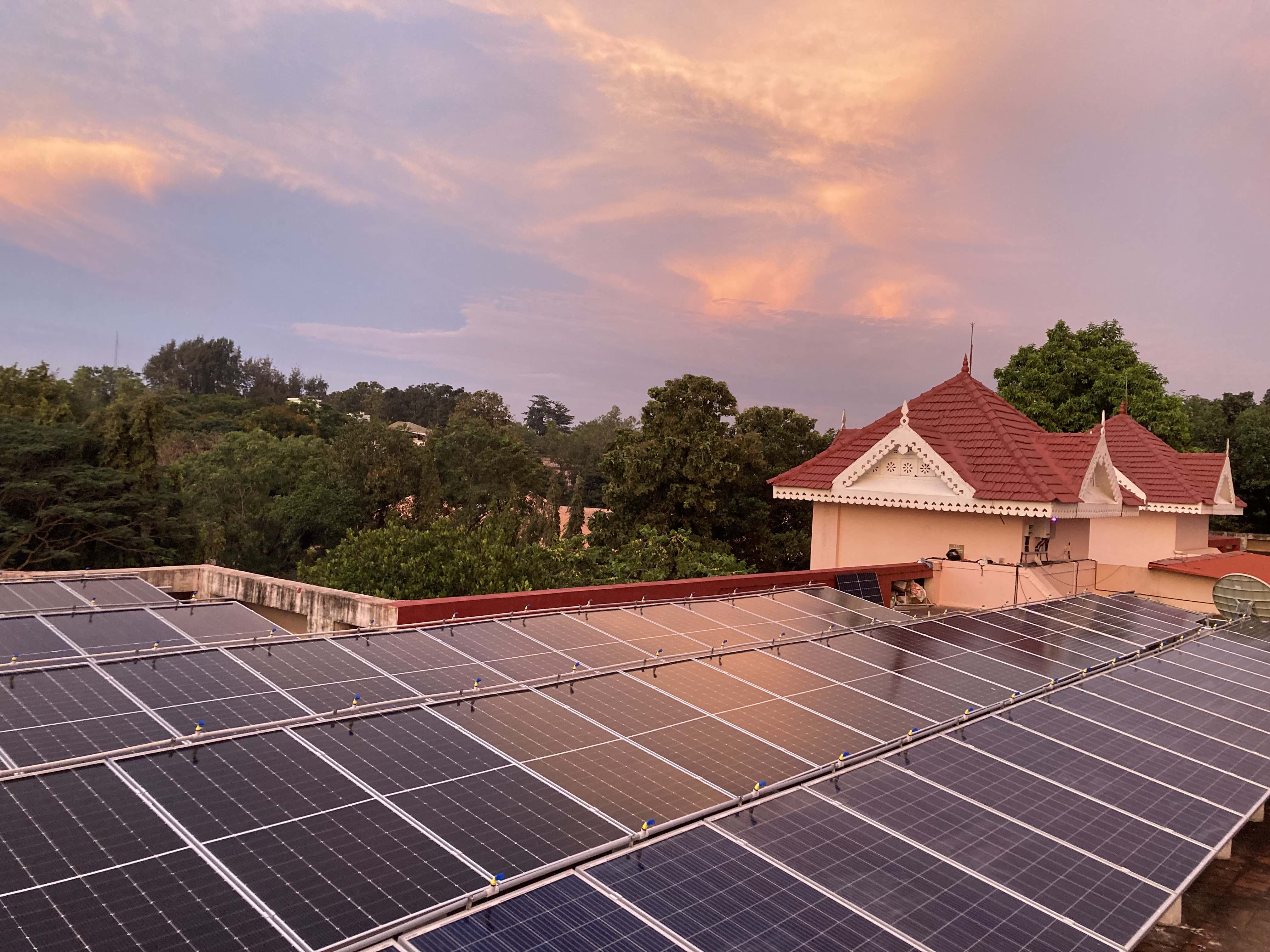
Interdepartmental Elective offered from Centre of Excellence in Advanced Materials.
Course Co-ordinator: Dr. Aldrin Antony, Department of Physics
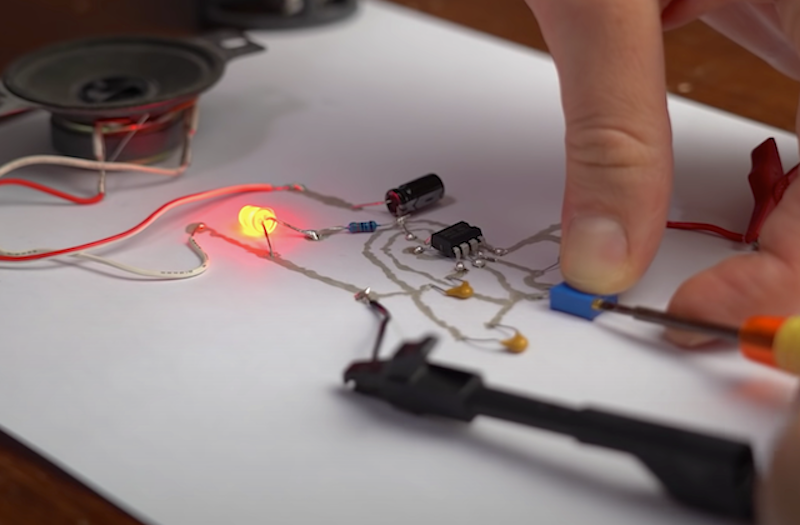
This is a basic course in Electronics which will give an idea about different semiconductor devices and digital electronics.